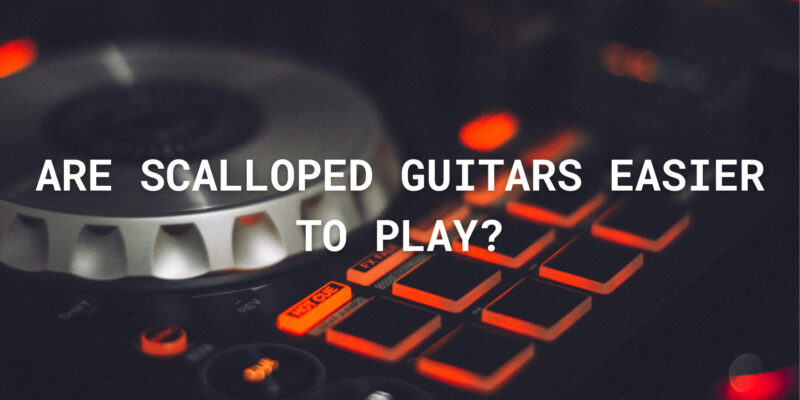Scalloped guitar fretboards, characterized by their concave fingerboard surface between the frets, are a distinctive feature that divides guitarists’ opinions. Some players swear by scalloped fretboards, citing their enhanced playability and expressiveness, while others find them challenging to adapt to. In this article, we’ll explore whether scalloped guitars are easier to play or if they present a unique set of challenges for guitarists.
Understanding Scalloped Fretboards
A scalloped guitar fretboard is achieved by removing wood from the fingerboard between the frets, creating a scooped or curved surface. This design choice allows the player’s fingers to make direct contact with the strings, offering specific advantages and drawbacks.
Advantages of Scalloped Fretboards:
- Enhanced Expressiveness: Scalloped fretboards enable guitarists to achieve nuanced and expressive playing. The reduced fingerboard contact with the strings allows for delicate control over vibrato, bends, and legato techniques, making it easier to infuse emotion into each note.
- Effortless Bending: String bending becomes notably easier on scalloped fretboards due to reduced friction between the strings and the fingerboard. This can be advantageous for players who enjoy incorporating wide bends and expressive phrasing into their music.
- Speed and Precision: Guitarists who prioritize speed and precision may find scalloped fretboards beneficial. The decreased resistance when fretting notes allows for faster and cleaner fretboard navigation, which can be advantageous in styles like neoclassical or shredding.
Challenges of Scalloped Fretboards:
- Initial Adaptation: Players accustomed to traditional flat or radiused fretboards may face a learning curve when transitioning to scalloped fretboards. The increased sensitivity requires a light touch to prevent unintentional bending or muting of strings.
- Intonation Control: Achieving precise intonation on a scalloped fretboard can be challenging, particularly for those unaccustomed to the design. String pressure must be carefully controlled to avoid inadvertent pitch modulation.
- String Noise: The reduced fingerboard contact can lead to increased string noise, especially when performing slides or string skips. Guitarists must adapt their technique to minimize unwanted noise.
Personal Preference and Style
Whether scalloped guitars are easier to play depends on the individual guitarist’s preferences and playing style. Some players, especially those who prioritize expressive playing and virtuosic techniques, may find scalloped fretboards to be easier and more conducive to their musical goals. However, those who favor traditional techniques and styles may initially struggle to adapt to the unique feel of scalloped fretboards.
Conclusion
Scalloped guitar fretboards are not inherently easier or harder to play; they represent a different playing experience tailored to specific musical goals. Guitarists looking to explore enhanced expressiveness, precise bending, and speedy playing may find scalloped fretboards to be advantageous. However, those making the switch should be prepared for an adaptation period, as mastering the unique characteristics of scalloped fretboards requires time and practice. Ultimately, the choice between scalloped and traditional fretboards comes down to individual preference and the musical style one wishes to pursue.


